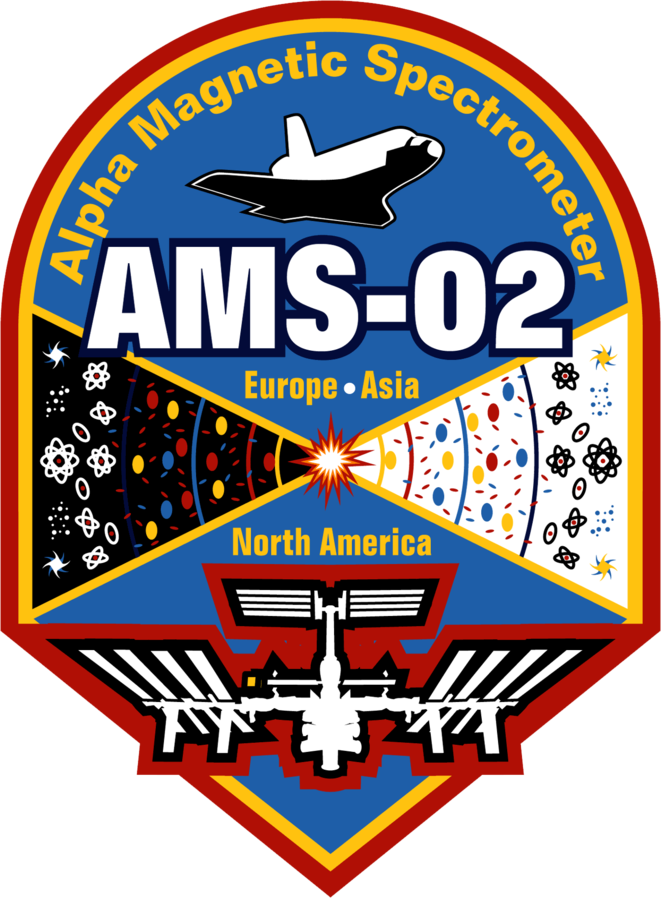Properties of Heavy Secondary Fluorine Cosmic Rays: Results from the Alpha Magnetic Spectrometer
Precise knowledge of the charge and rigidity dependence of the secondary cosmic ray fluxes and the secondary-to-primary flux ratios is essential in the understanding of cosmic ray propagation. We report the properties of heavy secondary cosmic ray fluorine F in the rigidity $R$ range 2.15 GV to 2.9 TV based on 0.29 million events collected by the Alpha Magnetic Spectrometer experiment on the International Space Station. The fluorine spectrum deviates from a single power law above 200 GV. The heavier secondary-to-primary F/Si flux ratio rigidity dependence is distinctly different from the lighter B/O (or B/C) rigidity dependence. In particular, above 10 GV, the $\frac{\textrm{F/Si}}{\textrm{B/O}}$ ratio can be described by a power law $R^\delta$ with $\delta = 0.052 \pm 0.007$. This shows that the propagation properties of heavy cosmic rays, from F to Si, are different from those of light cosmic rays, from He to O, and that the secondary cosmic rays have two classes.
Table-SI
Download the tableThe F flux $\Phi$ as a function of rigidity at the top of AMS in units of $[{\rm m}^2 \cdot {\rm sr} \cdot {\rm s} \cdot {\rm GV}]^{-1}$ including errors due to statistics (stat.); contributions to the systematic error from the trigger and acceptance (acc.); the rigidity resolution function and unfolding (unf.); the absolute rigidity scale (scale); and the total systematic error (syst.). The contribution of individual sources to the systematic error are added in quadrature to arrive at the total systematic error.
Table-SII
Download the tableThe fluorine to boron flux ratio F/B as a function of rigidity including errors due to statistics (stat.); contributions to the systematic error from the trigger, acceptance, and background (acc.); the rigidity resolution function and unfolding (unf.); the absolute rigidity scale (scale); and the total systematic error (syst.). The statistical errors are the sum in quadrature of the relative fluorine flux statistical errors and the relative boron flux statistical errors, multiplied by the F/B flux ratio. The systematic errors from the background subtraction, the trigger, and the event reconstruction and selection are likewise added in quadrature. The correlations in the systematic errors from the uncertainty in nuclear interaction cross sections, the unfolding, and the absolute rigidity scale between the fluorine and boron fluxes have been taken into account in calculating the corresponding systematic errors of the F/B flux ratio. The contribution of individual sources to the systematic error are added in quadrature to arrive at the total systematic uncertainty.
Table-SIII
Download the tableThe fluorine to silicon flux ratio F/Si as a function of rigidity including errors due to statistics (stat.); contributions to the systematic error from the trigger, acceptance, and background (acc.); the rigidity resolution function and unfolding (unf.); the absolute rigidity scale (scale); and the total systematic error (syst.). The statistical errors are the sum in quadrature of the relative fluorine flux statistical errors and the relative silicon flux statistical errors, multiplied by the F/Si flux ratio. The systematic errors from the background subtraction, the trigger, and the event reconstruction and selection are likewise added in quadrature. The correlations in the systematic errors from the uncertainty in nuclear interaction cross sections, the unfolding, and the absolute rigidity scale between the fluorine and silicon fluxes have been taken into account in calculating the corresponding systematic errors of the F/Si flux ratio. The contribution of individual sources to the systematic error are added in quadrature to arrive at the total systematic uncertainty.
The CRDB at LPSC/IN2P3/CNRS, online since 2013, is fully described in Maurin et al. (2014, 2020)
The CRDB © SSDC is developed at the Space Science Data Center, a facility of the Italian Space Agency (ASI).
